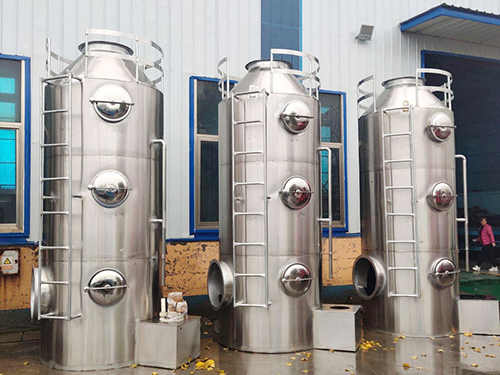SURVIVAL THROUGH QUALITY
PRODUCT CENTER
-
Pulse dust collector
-
Mine dust collector
-
Boiler dust collector
-
Metallurgical dust collector
-
Carbon plant dust collector
-
Chemical dust collector
-
Rubber dust collector
-
Woodworking dust collector
-
Single machine dust collector
-
Static electricity Dust collector
-
Cyclone dust collector
-
Wet dust collector
-
Filter cartridge dust collector
-
Insert valve (gate valve)
-
Ventilation butterfly valve (cold air valve)
-
Spiral conveyor (auger)
-
Scraper conveyor
-
Dust humidifier
-
Bucket elevator
-
Ash discharge valve
-
Material Handling Equipment
-
Wet scrubber
-
Dust collector
-
Dust removal filter bag
-
Dust removal bag cage
-
Polishing platform
-
Waste gas treatment equipment
-
Electric control cabinet
-
Fan
-
Smoke welding machine
-
Liquid level switch
-
Dust removal filter element
-
Aeration cushion
-
Sweeper
-
Dust suppression device
-
Solenoid valve

Stainless steel spray tower
Stainless steel spray tower is a new type of gas purification treatment equipment. It is improved on the basis of a floating packing layer gas purifier and is widely used in pre-treatment of industrial waste gas purification, dust removal, and other aspects, with good purification effects. For coal gasification process, gas washing is inevitable, and this unit operation is used in all coal gasification technologies. Due to its working principle similar to the washing process, it is named a water washing tower.
Spray tower application areas: waste gas purification in industries such as electronic component production, battery (battery) production, acid washing operations, laboratory exhaust, metallurgy, chemical industry, medicine, painting, food, brewing, and furniture production, suitable for the treatment and purification of painting waste gas.
Basic Principles of Stainless Steel Spray Tower Spray Tower
Acid-base, organic waste gas, and industrial waste gas are introduced into the waste gas treatment equipment through ventilation pipes. After passing through the filling layer, the industrial waste gas and sodium hydroxide solution digestion solution undergo gas-liquid two-phase sufficient contact digestion and neutralization reaction. After cleaning, the organic waste gas is removed from the industrial waste gas by a defogging plate and discharged into the gas by a centrifugal fan. After being lifted by a water pump motor at the bottom of the tower, the absorption liquid sprays down from the top of the tower and flows to the bottom of the tower circulation system for use. The cleaned organic waste gas and industrial waste gas ensure the local environmental protection level sewage treatment requirements, which are lower than China's environmental protection level emission requirements.
Product features:
1. The acid mist treatment system is simple, has fewer equipment, is corrosion-resistant, and has a high degree of automation, making the entire system operation and maintenance very convenient;
2. Stable performance, high dust removal efficiency, and good desulfurization effect;
3. Lightweight, easy to install, transport, and maintain management;
4. Specially suitable for water-soluble dusty gases;
Other instructions
Spray tower equipment: It adopts a circular tower body and is connected by flanges in sections. Specifically, it consists of a circulating water tank, tower body, inlet section, spray layer, packing layer, swirl defogging layer, outlet cone cap, inspection hole, etc.
Advantages of spray tower: simple process, low cost, low operating cost, and convenient installation; Stable performance, high dust removal efficiency, and good desulfurization effect; Long service life, convenient maintenance, simple operation and management, no special technical requirements; Strong adaptability, especially suitable for water-soluble dusty gases; Widely selected, suitable for various air volumes and industries; No requirements for dusty gases.
Disadvantages of spray towers: Not suitable for dry material recycling and utilization; If the circulating water is not treated properly, it is easy to cause secondary pollution.

